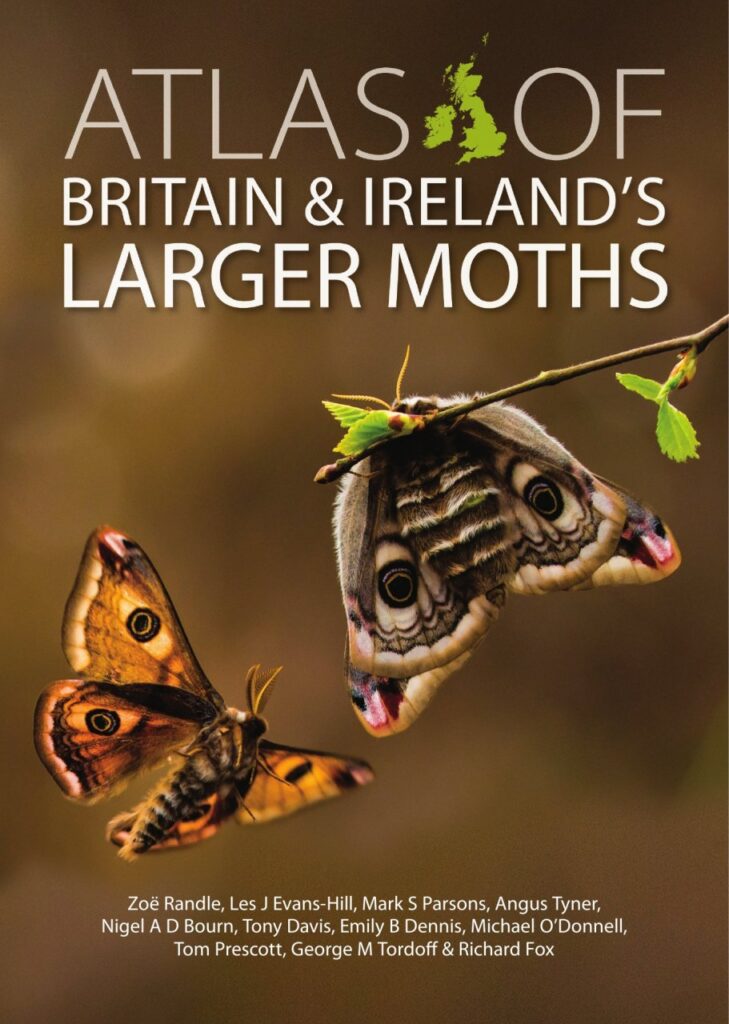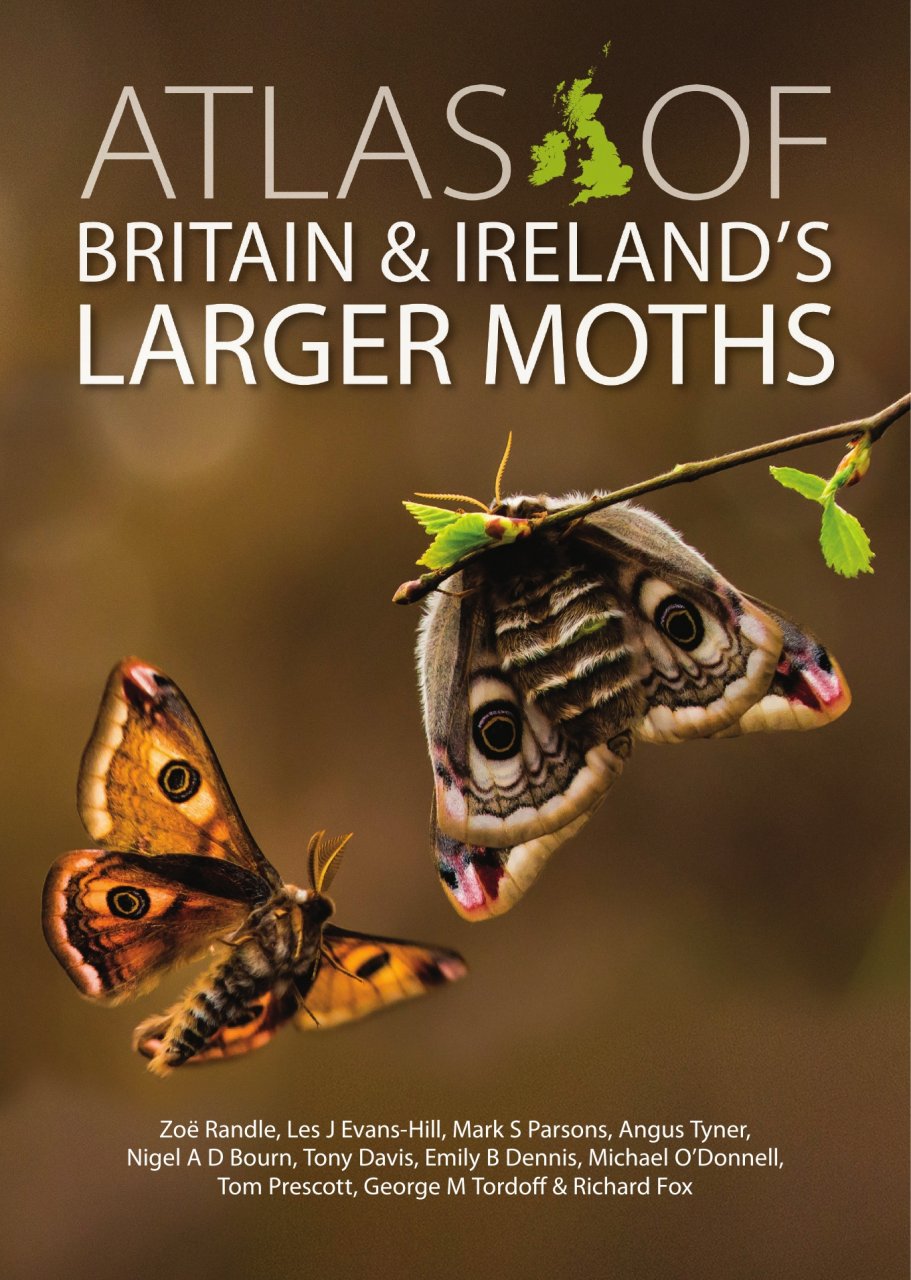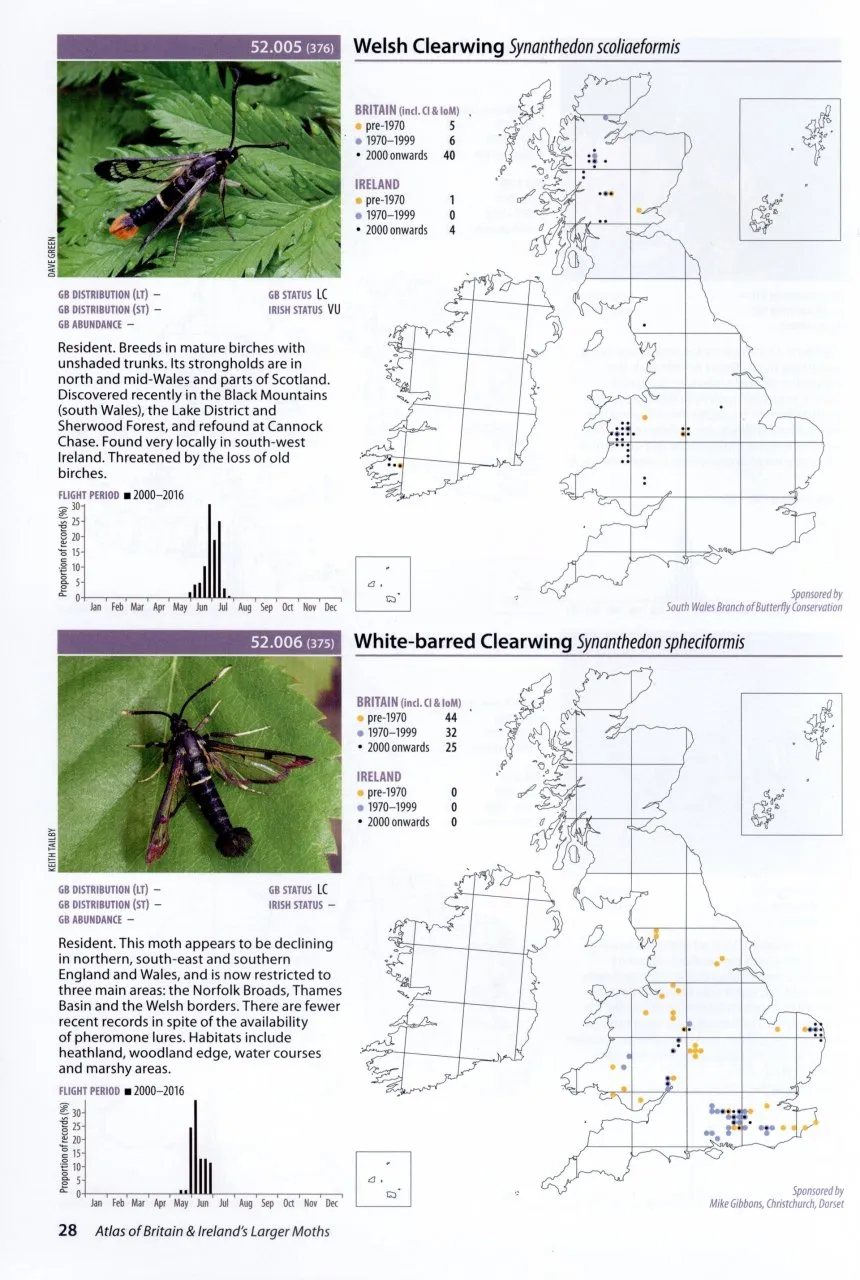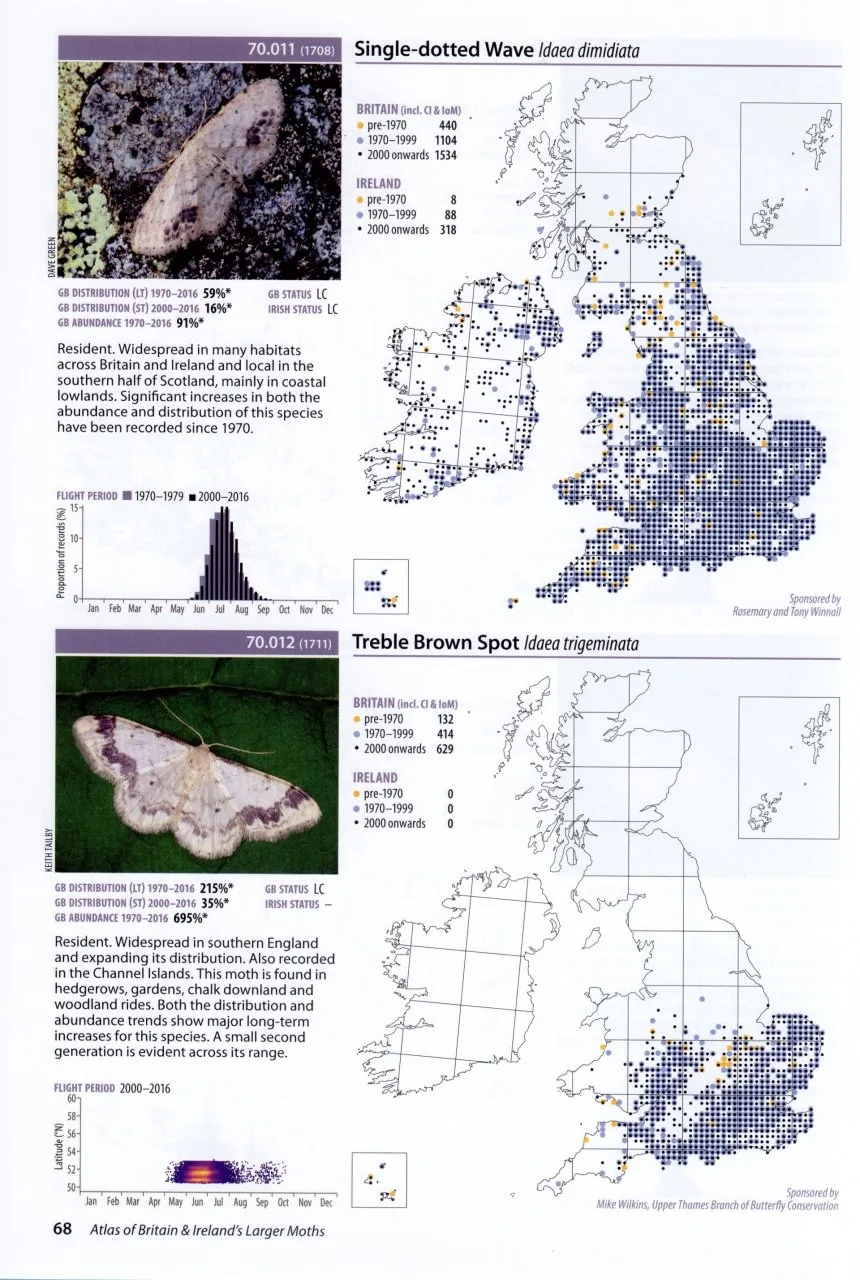This is the first ever atlas of our larger moths. All previous maps were provisional. This time it is official: 25 million records, contributed by the National Moth Recording Scheme run by Butterfly Conservation, and Ireland’s MothsIreland survey. They cover 867 species of resident and migrant moths, with another 20-odd extinct species consigned to an appendix. The colour dot-maps are made up of pre-1970 records (yellow), 1970–99 (blue) and 2000 onwards (black). Despite the vast improvement in moth-recording since 2000, there are still ill-recorded areas, most notably central Ireland. Nevertheless, we have here something like the real distributions of our moths.
Design-wise the atlas is a neat piece of work. To bring nearly 900 species within a compact single volume, and to economise on the weight, each gets just half a page. Yet within that half-page is packed a colour photo of the live moth, the map, a phenogram showing times of appearance, and how that has changed over the past half-century, a short account of the moth’s range, habitat and observed changes, its conservation status, and some vital statistics on distribution and abundance. The formal introductory text needs to be read carefully to get the most out of the atlas; to learn, for example, that a mysterious asterisk attached to certain figures indicates that the figures are statistically meaningful. All this entailed a heck of a lot of work, and brings great credit to the team behind it.
View this book on the NHBS website
What does it show us? First, that while ‘the recording of moths has gone from strength to strength, the same cannot be said of moth populations’. The majority of species have held on to their broad range, and some have actually expanded it, but the abundance figures are mostly well down, as anyone who has run a moth trap regularly over past decades will know. Quite why one species does well while another crashes is still a mystery, but the gradual attrition of habitat, both in quality and in quantity, must be a driver. A new hazard may be fertiliser. There is some evidence that moths perform more poorly on fertilised vegetation, and that includes unintentional fertility, such as the fall-out of nitrogen on road verges and field margins. The effect of climate change is also being felt, many species flying earlier (or, in a few late-flying species, later). Some species are increasing northwards, while other, northern species show signs of retreat.
It is not all doom and gloom. The lichen-feeding footman moths have increased massively, probably through a combination of clean air and climate change. Many new records of day-flying mountain moths have come from snaps taken by hill-walkers on their phones. Some hitherto coastal species are moving inland. And several new species are spreading on the south coast and in the London area.
The photographs are superb – the pristine colours of the fast-fading geometers in particular are a revelation. Micro-printed in the corner of each map is the name of a sponsor: for this is a crowdfunded atlas. More space and less weight could have been created by relegating the many vagrant species with just a few records to an appendix. There is a sense that (consciously or not) the authors are writing for ‘the moth-recording community’; species conservation tends to proceed in a series of hermetic bubbles. And one gets a bit tired of hearing that moths are useful because bats eat them; the lowest kind of compliment. But these are quibbles. The atlas is a magnificent piece of work. For moth fans, it is the book we have been waiting for all our lives.



